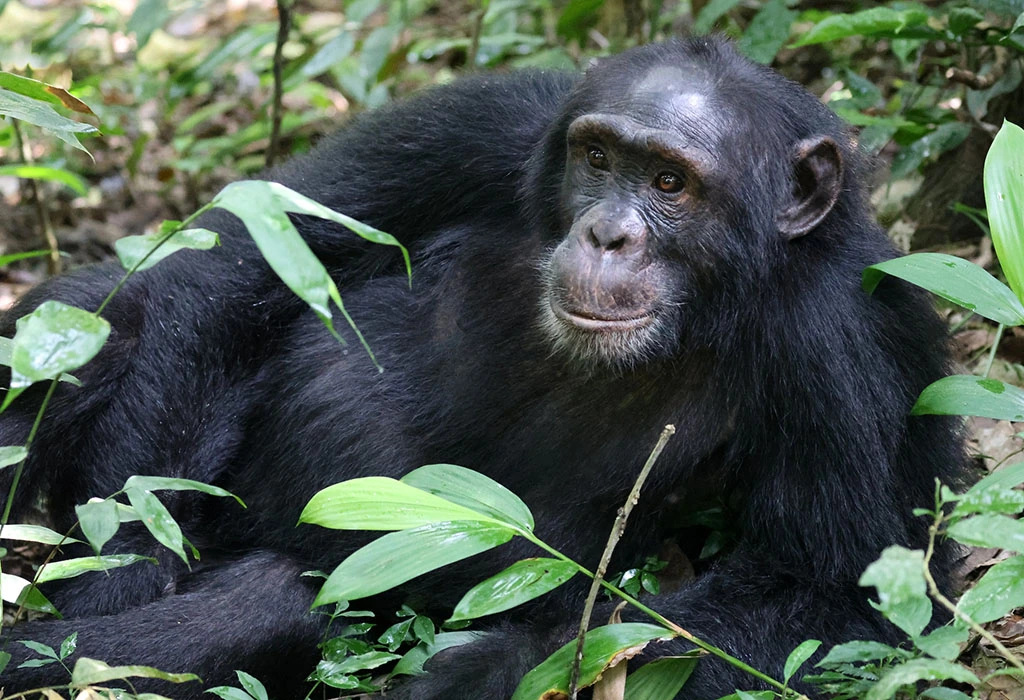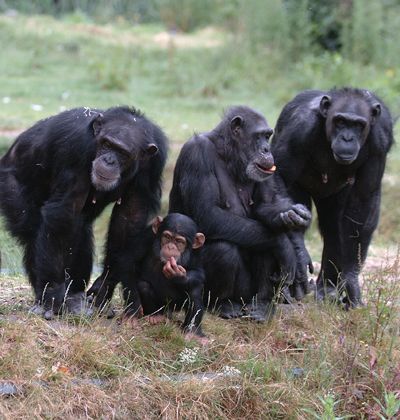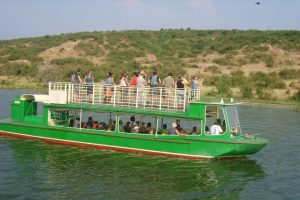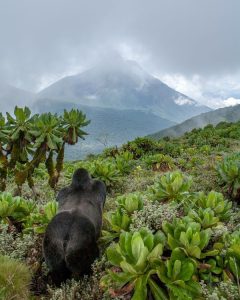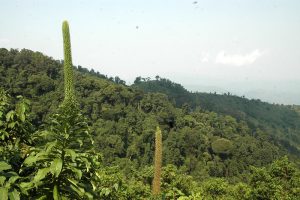What Kind of Chimpanzees Are Found in Uganda?
Chimpanzees are one of the most fascinating and intelligent creatures on Earth, and Uganda is one of the best places to see them in the wild. But what kind of chimpanzees live in Uganda? Let’s dive into this intriguing topic and explore the types of chimpanzees that call Uganda home, their habitats, conservation efforts, and where you can see them up close. What Kind of Chimpanzees Are Found in Uganda?
What Species of Chimpanzees Are Found in Uganda?
Uganda is home to the common chimpanzee (Pan troglodytes), which is one of the two species of chimpanzees in the world. The common chimpanzee is widespread across central and West Africa, but Uganda is particularly known for its dense populations in the wild.
What Are the Characteristics of Common Chimpanzees?
Common chimpanzees in Uganda share many physical and behavioral traits with their relatives. They have dark brown or black fur, large, expressive eyes, and opposable thumbs that enable them to manipulate objects and tools with great skill. Males usually grow larger than females, weighing up to 70 kg (154 lbs), while females typically weigh around 50 kg (110 lbs). These chimpanzees form tight-knit communities with complex hierarchies.
In the wild, they showcase remarkable problem-solving abilities and tool use. Their intelligence drives much of the fascination surrounding them and remains a critical focus for researchers and conservationists.
Where Can You Find Chimpanzees in Uganda?
Uganda is known for its rich biodiversity, and chimpanzees are a prominent feature in the country’s ecosystems. The country’s national parks and forests are prime spots for chimpanzee sightings. Some of the best places to see chimpanzees include:
Kibale National Park
Often referred to as the “primate capital of the world”, Kibale National Park is home to over 1,500 chimpanzees. Located in western Uganda, this park is one of the best places to track and observe chimpanzees. The forest here is dense and offers an excellent environment for these primates to thrive. Kibale is a favorite for tourists due to its well-maintained trails and knowledgeable guides who can offer a close encounter with chimpanzees.
Budongo Forest
Budongo Forest is another prime location for chimpanzee sightings, particularly known for its lush, green environment and rich biodiversity. The forest is located in the western part of Uganda, within the Murchison Falls Conservation Area. Budongo is famous for its successful chimpanzee tracking programs, where visitors can get a chance to observe these fascinating primates in their natural habitat.
Kyambura Gorge (Queen Elizabeth National Park)
Located in Queen Elizabeth National Park, Kyambura Gorge is a unique location where visitors can see chimpanzees up close. This gorge is rich in flora and fauna, and its steep, lush terrain offers a rare chance to spot chimpanzees in the wild. Despite the rugged nature of the area, tourists flock here for the opportunity to track these remarkable animals.
Ngamba Island
For those interested in seeing orphaned or rescued chimpanzees, Ngamba Island on Lake Victoria is a great option. This chimpanzee sanctuary provides a safe haven for chimpanzees that have been rescued from the illegal pet trade or other difficult situations. Visitors to the sanctuary can learn about chimpanzee rehabilitation efforts and even engage in feeding and interacting with the chimpanzees under strict supervision.
What Is the Role of Uganda in Chimpanzee Conservation?
Chimpanzees are critically endangered, and Uganda plays a significant role in protecting them. The country is home to several conservation initiatives aimed at preserving chimpanzee populations, educating the public, and preventing the illegal trade of chimpanzees.
Why Are Chimpanzees Endangered?
Chimpanzees are listed as endangered on the IUCN Red List due to various threats, including:
Habitat loss: Deforestation, agricultural expansion, and human settlement have led to the loss of vital chimpanzee habitats in Uganda.
Poaching: Hunting and illegal capture for the pet trade are significant threats.
Disease: Chimpanzees are susceptible to diseases that are transmitted by humans and other animals, including the Ebola virus.
What Is Being Done to Protect Chimpanzees?
Uganda is home to several organizations working tirelessly to protect chimpanzees. The Uganda Wildlife Authority (UWA) is responsible for managing national parks and ensuring that chimpanzees and other wildlife are protected. Additionally, the Jane Goodall Institute in Uganda has been instrumental in promoting conservation through education and community-based projects.
Conservationists also work with local communities to reduce the negative impacts of human activities on chimpanzees. By promoting sustainable practices and eco-tourism, Uganda is making strides to ensure that chimpanzees continue to thrive for future generations.
How Does Tourism Help Chimpanzee Conservation?
Eco-tourism plays a crucial role in the protection of chimpanzees in Uganda. Chimpanzee tracking tours bring in revenue that supports conservation projects and benefits local communities. When tourists visit national parks like Kibale and Budongo, they contribute to the upkeep of these parks and the protection of their wildlife. Moreover, by participating in responsible tourism, travelers help raise awareness about the importance of chimpanzee conservation.
What Can You Expect on a Chimpanzee Tracking Tour in Uganda?
Chimpanzee tracking in Uganda is an incredible experience that offers visitors a chance to observe these fascinating creatures in their natural environment. If you’re planning a chimpanzee trekking adventure, here’s what you can expect:
What Should You Know Before You Go?
Chimpanzee trekking is not for the faint of heart. The treks usually take between 2 to 4 hours, and the terrain can be challenging. The forests can be dense, muddy, and steep, so it’s important to be physically prepared and bring suitable clothing (like hiking boots and long sleeves). A guide will lead you through the forest, and while the trekking conditions can be strenuous, the reward of seeing chimpanzees in the wild is well worth it.
What Will You See on a Trek?
Once you find the chimpanzees, you’ll witness their fascinating social dynamics. Chimpanzees often travel in groups, and you’ll have the chance to observe them grooming, playing, and using tools to find food. They may also display their vocalizations, such as hoots and screams, to communicate with one another. While tracking, you might also see other wildlife, such as monkeys, birds, and a variety of plants.
Is It Safe to Track Chimpanzees?
Chimpanzee trekking is safe when done responsibly. Guides are well-trained to ensure that visitors follow ethical guidelines and maintain a safe distance from the chimpanzees. It’s important not to approach them closely or disturb their natural behaviors. Staying at least 7 meters away from the chimpanzees is a general rule to avoid stressing them.
Why Are Chimpanzees Important to Uganda?
Chimpanzees are not only vital for the environment but are also an integral part of Uganda’s cultural and ecological identity. As one of the country’s top wildlife attractions, they contribute significantly to eco-tourism, which supports local economies and promotes conservation. By protecting chimpanzees, Uganda is preserving its natural heritage and biodiversity, benefiting both wildlife and human populations.
The Importance of Chimpanzees in Uganda : What Kind of Chimpanzees Are Found in Uganda?
Chimpanzees are not just another animal in Uganda—they are a symbol of the country’s incredible biodiversity and the ongoing efforts to protect wildlife. With Kibale National Park, Budongo Forest, and Kyambura Gorge offering prime chimpanzee tracking opportunities, Uganda is one of the best places in the world to witness these fascinating creatures in their natural habitat.
Conservation initiatives in Uganda continue to play a crucial role in protecting chimpanzees, ensuring that they thrive in the wild despite the threats they face. By supporting eco-tourism and responsible chimpanzee tracking, travelers can contribute to the preservation of these remarkable animals while having the adventure of a lifetime.
Whether you’re looking to visit chimpanzees in their natural habitat or learn more about the conservation efforts in place, Uganda offers a unique and rewarding experience for anyone interested in these incredible primates.
FAQs About Chimpanzees in Uganda (What Kind of Chimpanzees Are Found in Uganda?)
What kind of chimpanzees are in Uganda?
Uganda is home to the Common Chimpanzee (Pan troglodytes), which is the only chimpanzee species found in the country.
Where can I see chimpanzees in Uganda?
Some of the best places to see chimpanzees in Uganda are Kibale National Park, Budongo Forest, and Kyambura Gorge.
How much does chimpanzee tracking cost in Uganda?
Chimpanzee tracking permits typically cost between $100 and $150, depending on the park or sanctuary.
When is the best time to visit Uganda for chimpanzee tracking?
The dry seasons, from December to February and June to September, are the best times to visit Uganda for chimpanzee tracking.
Are chimpanzees endangered in Uganda?
Yes, chimpanzees are critically endangered due to habitat loss, poaching, and disease, which makes conservation efforts in Uganda crucial.

